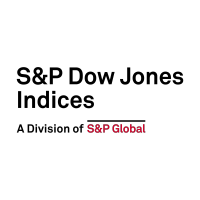Breaking the Market Cap Weight with an Index
When people talk about indexes, they are usually referring to market-cap weighted indexes. Market-cap weighting is based on price and outstanding number of shares. One simply takes the number of shares outstanding and multiplies them by the share price to arrive at market cap. This calculation results in the biggest companies commanding the largest weights….
Investing in Real Estate: Global Diversification using a Quantitative Rules-Based Index
A question… Take five major asset classes: U.S. stocks, international stocks, long-term government bonds, Treasury Bills, and REITs. If their respective compound rate of return over the past two decades is compared, which would come in highest? Stocks? Maybe bonds as they’ve ridden yields down to near zero? Nope. REITs win the day. If returns…
Using Market Fluctuations to Unlock Opportunity
Volatility often represents uncertainty, but it could also signal opportunity. Take a closer look at how the systematic design of the S&P 500 Dynamic Participation Index may help market participants identify and reflect potential opportunities inside the daily price fluctuations of the S&P 500.
Introducing the S&P Dividend Growers Indices
Dividends are an important part of the investment toolkit, contributing 36% to the total return of the S&P 500® since 1936.1 This sizable contribution has been particularly welcome during the multi-year low interest rate environment and, more recently, as the world has faced economic dislocations induced by COVID-19. In addition to dividend income, investors have…
How ESG + S&P Dividend Aristocrats Influences Risk/Return
What happens when cutting-edge ESG data is applied to quality dividend growers? Jon Winslade and Ari Rajendra of S&P DJI join Ryan Reardon of State Street Global Advisors to explore how the new S&P ESG Dividend Aristocrats Indices could help market participants identify and access new and innovative opportunities.
Capturing Future Tech with Index-Based Tools
Discover how index-based strategies are expanding access to technology and innovation factors with S&P DJI’s Anu Ganti, Direxion’s Dave Mazza, and ProShares’ Simeon Hyman.
- Categories Equities, Strategy
- Tags benchmarking, disruptive technology, Dividend Aristocrats, dividend growers, dividend growth strategies, ETFs, Financial Advisors, global equities, harnessing innovation, indexing, information technology, risk management, S&P Dow Jones Indices, S&P Kensho Moonshots, S&P Technology Dividend Aristocrats, sector strategies, transformative technology
- Tags
- benchmarking, disruptive technology, Dividend Aristocrats, dividend growers, dividend growth strategies, ETFs, Financial Advisors, global equities, harnessing innovation, indexing, information technology, risk management, S&P Dow Jones Indices, S&P Kensho Moonshots, S&P Technology Dividend Aristocrats, sector strategies, transformative technology
Sizing Up Style Returns
After more than a decade of underperformance, and in stark contrast to Growth’s dominance for much of 2020, Value has made an impressive comeback so far in 2021, outperforming Growth around the world, including across the size spectrum in the U.S. In fact, Value’s YTD outperformance against Growth in mid and small caps is the…
Valuing Equal Weight
We have previously discussed the impact of Equal Weight’s rebound on its exposure to the momentum factor. We now turn our attention to its exposure to the value factor, as the recovery in smaller caps and value stocks has been an important tailwind for the strategy. The S&P 500® Equal Weight is typically biased toward…
Deciphering Decrement Indices
Low interest rates and dividend risk are two challenges commonly faced by equity-linked structured products. Explore how the design of S&P DJI’s range of decrement indices could help address these challenges and potentially deliver more favorable terms for structured products.
Credit Risk Premium in the Equity Market
Firms with low credit risk generally have higher stock market returns than firms with high credit risk.1 The S&P 500® Higher Credit-Rating Ex Insurance Equity (HCREIE) Index is designed to capture the credit risk premium in the equity market. In this blog, we will introduce the index design, performance, and factor exposure. Index Design The…
- Categories Equities, Strategy
- Tags credit rating, credit risk, insurance, S&P 500 HCREIE Index




















































